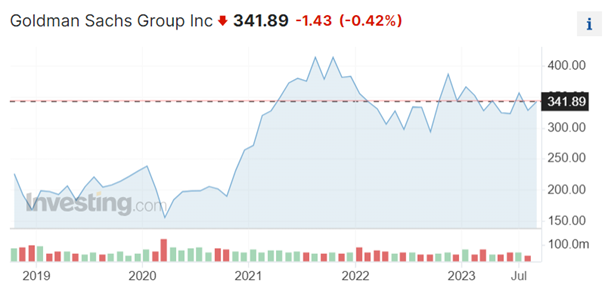Article on Investing said that Goldman Sachs Asset Management (GSAM) has successfully garnered 14.2 billion USD for its latest investment vehicle, Vintage IX. This fund is specifically designed to acquire stakes in private equity funds and has secured commitments from a mix of institutional investors, high-net-worth individuals, and Goldman Sachs employees. The current dynamics of the secondary market are largely influenced by investors adjusting their exposure to private equity amid a challenging macroeconomic landscape. Additionally, the emergence of continuation vehicles, which allow buyout firms to prolong their ownership of businesses beyond the typical holding period, is further contributing to this trend. Harold Hope, Global Head of Secondaries at GSAM, emphasized that the market currently favors buyers due to factors like the expansion of private markets and the need for increased liquidity, driven in part by over-allocation.
Positive news for Goldman Sachs in my opinion. Article continued that apart from Vintage IX, GSAM has also gathered approximately 1 billion USD for another venture, Vintage Infrastructure Partners, focused on infrastructure secondaries. This initiative mirrors the prevailing trend where investors are seeking diversification in their portfolios through assets like toll roads and power networks. These investments are valued for their potential to provide stable, reliable returns and act as a hedge against inflation. I see it as a clear signa that company is intending to expand and continue their positive business.
In the last five years, GS stocks have been rather positive on growth, providing us with 45% growth.* There were no major corrections in the last period, so I can confidently say that stocks are on a nice growing streak. There was, however, correction in 2020, but I am not counting it to major, as basically every stock on the stock markets was affected by the start of pandemic. My prediction for Goldman Sachs is that they will continue with good job they are doing, so I expect that their stocks will act the same in positive growth as they did so far. [1]

Movement of Goldman Sachs in the last five years. (Source: Investing) *
* Past performance is no guarantee of future results.
[1] Forward-looking statements are based on assumptions and current expectations, which may be inaccurate, or based on the current economic environment which is subject to change. Such statements are not guaranteeing of future performance. They involve risks and other uncertainties which are difficult to predict. Results could differ materially from those expressed or implied in any forward-looking statements.








